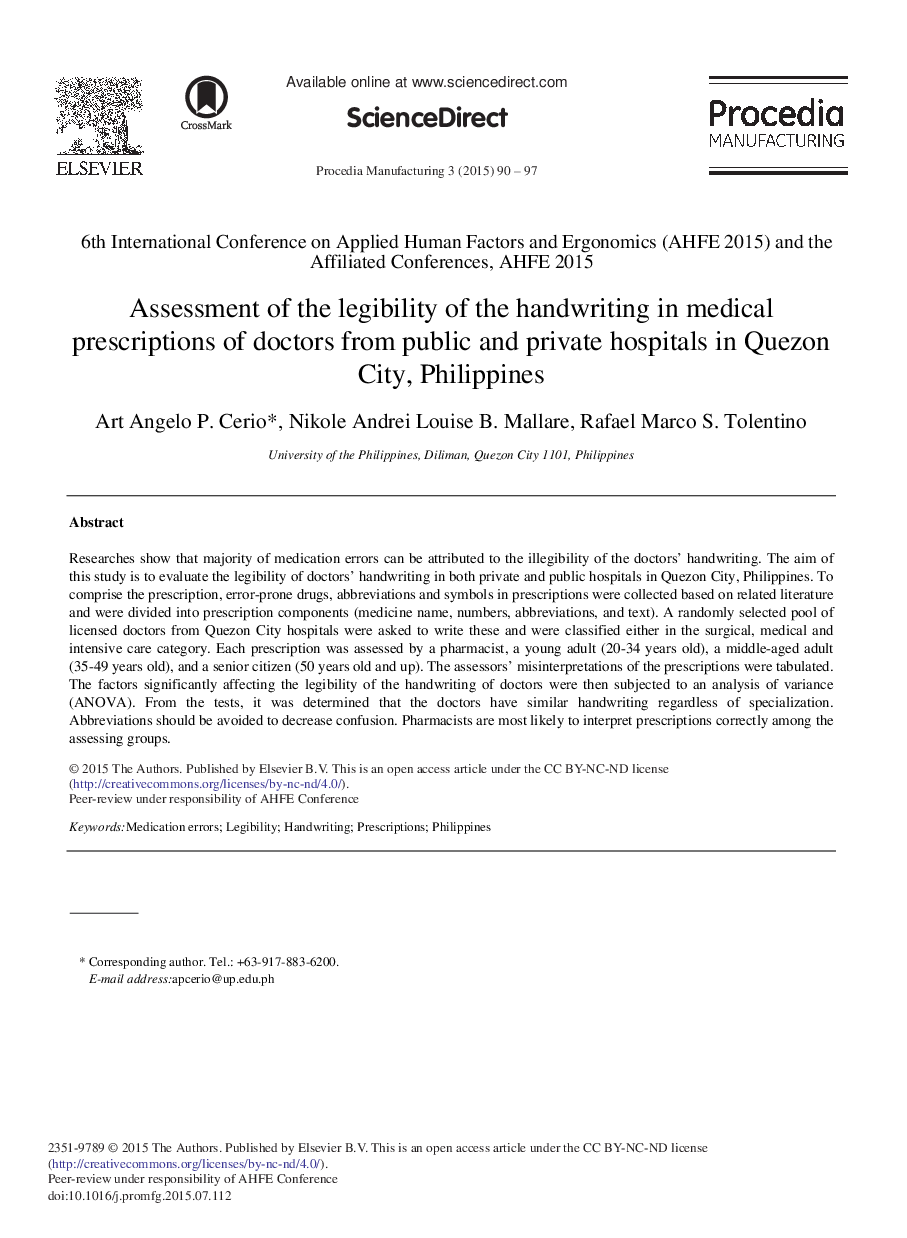| Article ID | Journal | Published Year | Pages | File Type |
|---|---|---|---|---|
| 1143771 | Procedia Manufacturing | 2015 | 8 Pages |
Researches show that majority of medication errors can be attributed to the illegibility of the doctors’ handwriting. The aim of this study is to evaluate the legibility of doctors’ handwriting in both private and public hospitals in Quezon City, Philippines. To comprise the prescription, error-prone drugs, abbreviations and symbols in prescriptions were collected based on related literature and were divided into prescription components (medicine name, numbers, abbreviations, and text). A randomly selected pool of licensed doctors from Quezon City hospitals were asked to write these and were classified either in the surgical, medical and intensive care category. Each prescription was assessed by a pharmacist, a young adult (20-34 years old), a middle-aged adult (35-49 years old), and a senior citizen (50 years old and up). The assessors’ misinterpretations of the prescriptions were tabulated. The factors significantly affecting the legibility of the handwriting of doctors were then subjected to an analysis of variance (ANOVA). From the tests, it was determined that the doctors have similar handwriting regardless of specialization. Abbreviations should be avoided to decrease confusion. Pharmacists are most likely to interpret prescriptions correctly among the assessing groups.
